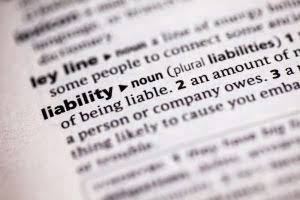
Assume that the customer prepaid the service on October 15, 2019, and all three treatments occur on the first day of the month of service. We also assume that $40 in revenue is allocated to each of the three treatments. Assume, for example, that for the currentyear $7,000 of interest will be accrued.
Recording Payroll
For instance a mortgage is a loan secured by specified real estate of the company, usually land with buildings on it. If investors purchase bonds on dates falling in between the interest payment dates, then the investor pays an additional interest amount. For example, if an investor purchases a bond four months after the last interest payment, then the issuer will add these additional four months of interest to the purchase price. When the next interest payment date occurs, the issuer pays the full six months interest to the purchaser. The interest amount paid and received by the bond-holder will net to two months.
Bonds Payable:
A note payable is usually classified as a long-term (noncurrent)liability if the note period is longer than one year or thestandard operating period of the company. However, during thecompany’s current operating period, any portion of the long-termnote due that will be paid in the current period is considered acurrent portion of a note payable. The outstandingbalance note payable during the current period remains a noncurrentnote payable.
Bonds in the Financial Statement
As such, debentures are usually only issued by large, well-established companies. These bonds usually command a higher interest rate because of the added risk for investors. Shareholder approval is an important step because bondholders are creditors with a prior claim on the corporation’s assets if liquidation occurs. Further, dividend distributions may be restricted during the life of the bonds, and those shareholders affected usually need to approve this. These restrictions are typically reported to the reader of financial statements through note disclosure. A relatively small percent of corporations will issue preferred stock in addition to their common stock.
Recording the Issuance of Bonds at a Discount
- On the balance sheet, the current portion of thenoncurrent liability is separated from the remaining noncurrentliability.
- The amortization of premiums and discounts is an intermediate financial accounting topic and is not covered here.
- Note that the second year’s interest is earned on both the original $1 and on the 10 cents interest earned during the first year.
- Long-term debt’s current portion is the portion of these obligations that is due within the next year.
- This increase provides an example of compound interest — interest earned on interest.
Interest is a monetary incentive to the lender, which justifies loan risk. An account payable is usually a less formal arrangement than a promissory note for a current note payable. For now, know that for some debt, including short-term or current, a formal contract might be created. This contract provides additional legal protection for the lender in the event of failure by the borrower to make timely payments. Also, the contract often provides an opportunity for the lender to actually sell the rights in the contract to another party.

Corporate bond issuers are thereby protected in the event that market interest rates decline below the bond contract interest rate. The higher interest rate bonds can be called to be replaced by bonds bearing a lower interest rate. Whether or not long-lived assets like property, plant, and equipment are pledged as security is an important consideration for bondholders because doing so helps to safeguard their investments.
1: Identify and Describe Current Liabilities
This makes intuitive sense given that the bonds have only been held for two months making interest for two months the correct amount. When sinking fund bonds are issued, the corporation is required to deposit funds at regular intervals with a trustee. This feature ensures the availability of adequate cash for https://www.bookstime.com/ the redemption of the bonds at maturity. The fund is called “sinking” because the transferred assets are tied up or “sunk,” and cannot be used for any purpose other than the redemption of the bonds. A debenture is a formal document stating that a company is liable to pay a specified amount with interest.
What is a long-term liability?
It also shows whether the company can pay its current liabilities when they’re due. Long-term liability is sometimes referred to as non-current liability or long-term debt. Any bond interest that has accrued but has not been paid as of the balance sheet date is reported as the current liability other accrued liabilities. When notes payable appears as a long-term liability, it is reporting the amount of loan principal that will not be payable within one year of the balance sheet date. Any mortgage payable is recorded as a long-term liability, though the principal and interest due within the year is considered a current liability and is recorded as such.
- However, for accounting purposes the economic entity assumption results in the sole proprietorship’s business transactions being accounted for separately from the owner’s personal transactions.
- The title to bearer bonds passes on delivery of the bonds to new owners and is not tracked.
- On the maturity date of December 31, 2023, the interest expense of $80 is paid, bondholders are repaid, and the premium is written off as a reduction of interest expense.
- Note that the bond interest on November 1 is for the amount the bondholder is entitled to, which is two months’ of interest.
- A future payment to a government agency is requiredfor the amount collected.
In the current year thedebtor will pay a total of $25,000—that is, $7,000 in interest and$18,000 for the current portion of the note payable. The portion of a note payable due in the current period isrecognized as current, while the remaining outstanding balance is anoncurrent note payable. For example, Figure 12.4 shows that $18,000 of a $100,000 note payable isscheduled to be paid within the current period (typically withinone year).
Common Types of Liabilities

This permits a large number of individuals and institutions to participate in corporate financing. The issue of bonds with a call provision permits the issuing which of the following are long-term liabilities? corporation to redeem, or call, the bonds before their maturity date. The bond indenture usually indicates the price at which bonds are callable.

